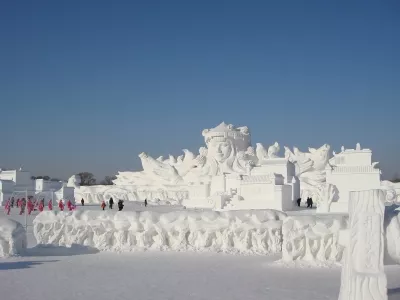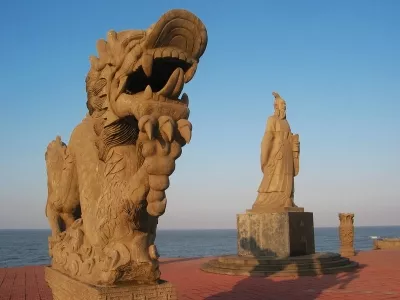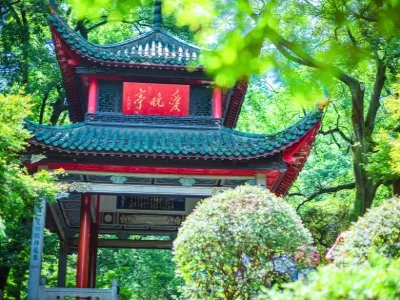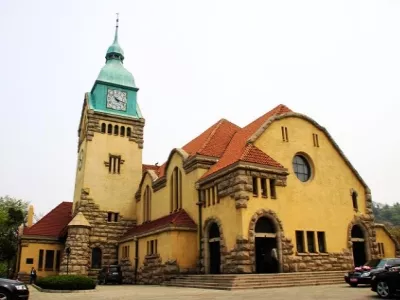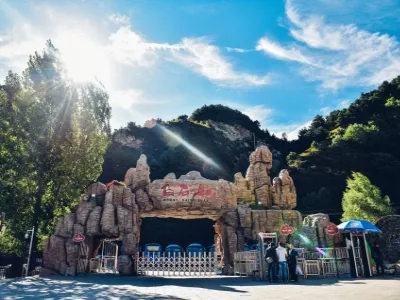Nicknamed "Fish City", Shantou lies in southeastern Guangdong on the South China Sea coast. Situated at the estuaries of the Han, Rong, and Lian Rivers, it is the only city in mainland China with an inner harbor. Historically hailed as the "Gateway to Eastern Lingnan", Shantou was a vital port on the Maritime Silk Road during the Tang Dynasty. It remains one of China's largest emigration ports.
Shantou administrates 6 urban districts (Jinping, Haojiang, Longhu, Chaoyang, Chaonan, Chenghai), 1 county (Nan'ao), and 3 functional zones (Bonded Zone, High-tech Zone, Bay Area). It is home to many overseas Chinese who maintain close ties abroad. The diaspora communities in over 40 countries contain Shantou natives known locally as "Chaoren" - wherever there are Chinese people, there are Chaoren.
Experience Shantou's maritime legacy as an emigrant port. Visit temples honoring goddesses of the sea. Taste Teochew cuisine, the heritage of seafarers. In Shantou, discover the source of Chinese migration worldwide.
Consumption level
Shantou has a relatively affordable cost of living and travel. Budget hotels range from 100-200RMB per night. Meals at local restaurants normally cost around 20RMB per person.
To maximize your budget, stay in express business hotels located near top attractions like Chen Cihong Memorial Hall and Nan'ao Island. Use public buses, walking, or taxis to get around for just a few RMB per ride. Enjoy local delicacies like Teochew-style crab soup dumplings and cold sesame noodles from small eateries.
By opting for budget accommodations, getting around via public transit and foot, and sampling inexpensive food stalls, travelers can immerse themselves in Shantou's mix of culture and coastal scenery without overspending. Focus your time and money on just a couple highlights each day. With good planning, you can experience Shantou's unique Teochew heritage for around 200RMB or less per day.
Chaoshan Food Festival
Chaozhou Cuisine Festival in Shantou
The Chaozhou Cuisine Festival in Shantou celebrates the local Swatow or Chaozhou style of Chinese cuisine with over 1,000 years of history. First held in 1988, the festival has become Shantou's premier culinary event.
The schedule varies each year, lasting up to a month to showcase Chaozhou's diverse flavors. Visitors sample signature dishes like steamed fish, braised goose, rice dumplings, oyster omelets, and chilled seafood. Chefs give demonstrations and compete in cook-offs.
The lively festivities also feature performances, exhibits, and lectures exploring Chaozhou's culinary traditions. Food companies showcase new products and innovations.
For travelers interested in experiencing authentic Chaozhou cuisine, the Shantou festival provides a delicious introduction to this influential regional style. The traditional dishes, ingredients, and cooking methods highlight the cultural spirit of Chaozhou.
Location: Shantou, Guangdong
Time: Varies yearly, up to one month
The Wonder of "Standing Pole without Shadow"
Each year at noon on the summer solstice (June 22nd), a stunning solar spectacle occurs at the Tropic of Cancer marker in Shantou's Sangpu Mountain Scenic Area. As the sun shines directly overhead, its shadow vanishes in an instant - creating the phenomenon known as "the pole's shadow cannot be seen." Eager observers flock to witness this annual "pole shadow" event unique to the Tropic of Cancer. Arrive early to secure a prime viewing spot, then patiently wait as the sun makes its way across the sky. At precisely 12 pm, a collective gasp will resound as shadows disappear and the pole stands alone, seemingly unattached to the ground below. This fleeting moment connects us to the rhythms of the cosmos and the orbital dance of the Earth around the Sun. Don't miss your chance to experience this dazzling celestial wonder only visible here on the solstice at the Tropic of Cancer.
Location for the filming of 'Dream of the Red Chamber'
Fans of the classic TV series Dream of the Red Chamber will recognize the iconic meteorite scene filmed at Diecai Yanzhi in Shantou. This sprawling Buddhist temple complex is home to a massive boulder engraved with the lament "No talent to mend the sky, futilely entering the mortal world for so many years." As an ancient Lingnan Buddhist temple with thriving incense offerings, Diecai Yanzhi draws pilgrims and monks from across the region. Stroll through serene courtyards and admire the ornate temple architecture to immerse yourself in the same monastic setting featured in the beloved show. Pause to reflect when you encounter the famouscarved meteorite, its message of impermanence and futility echoing across centuries. With its storied heritage and spiritual gravitas, it's easy to see why Dream of the Red Chamber chose this historic temple as the backdrop for the meteorite's pivotal scene.
History
Archaeological evidence confirms human activity in Lianyungang's ancient Mount Qushan and present-day Mount Jinping area as early as 10,000 years ago. In 1959 and 1978, the oldest Paleolithic sites in southeast China were discovered at Erjian and Daxian Village with clear stratigraphic layers. Mount Jinping has 19 Neolithic sites, with Erjian being one of China's earliest farming areas.
The 20-meter long, 10-meter wide "General Cliff Painting" discovered in 1979 was appraised by the State Administration of Cultural Heritage as "an extremely important cultural relic and rare major discovery, the earliest 'book' in China."
The Donghan era art treasure "Kongwang Mountain Grottoes Statues" are the earliest Buddhist grotto statues in China, 100-200 years earlier than the Dunhuang Grottoes, and protected at the national level.
The area is also steeped in history, with attractions related to Confucius' sea gazing, Emperor Qin's inspections, and famous poets and officials like Tao Yuanming, Li Bai, Su Dongpo, Shen Kuo, Li Qingzhao, Wu Cheng'en, Li Ruzhen, Wu Jingzi, Lin Zexu, Zhu Ziqing and more.
Best Travel Time
Although Shantou is hot in the midsummer, it is less scorching and often attacked by typhoons; Autumn is cool and dry, with clear weather. There is no severe cold in winter, but there is a short-term cold. The hottest period is from mid July to early August, with temperatures ranging from 35 ℃ to 38 ℃. April May and September October are the best travel times for Shantou every year, when the temperature is suitable and it is very suitable for travel.Dressing Guidelines
Shantou Clothing Recommendations
Shantou's springs are rainy, so bring rain gear and wear light long sleeves when going out. Summers are hot and sunny, so protect yourself from the sun. Winters can be mild with temperatures cool enough for sweaters.
Shantou has a subtropical climate, with humid springs, hot summers, and mild winters. Pack an umbrella and light rainjacket for the frequent spring showers. Breathable summer clothing will keep you cool during hot days. In winter, pair sweaters and jackets over long sleeves for warmth during cool evenings.
Dressing in layers and bringing protective outerwear for Shantou's rainy springs and strong summer sunshine is key. With proper sun protection and weather-appropriate clothing, you'll stay comfortable exploring this coastal Chinese city throughout the seasons.
Medical treatment
Here is some helpful information about medical care in Shenzhen, China for an English travel website:Medical Care in ShenzhenShenzhen has several top-rated Tier 3 hospitals and many conveniently located 24-hour pharmacies for purchasing medication or over-the-counter remedies. Medical care and prescriptions are readily accessible for travelers.Some major hospitals in Shenzhen include: Shenzhen People's Hospital Outpatient and Emergency Department 1Phone: 0755-82238441Shenzhen People's Hospital Outpatient and Emergency Department 2Phone: 0755-25531387Shenzhen Traditional Chinese Medicine Hospital Emergency Department Phone: 0755-83334055With reputable hospitals, open pharmacies, and English-speaking staff in major facilities, travelers can feel at ease getting treatment if the need arises while visiting Shenzhen. Be sure to travel with proper health insurance and documentation to facilitate care. Taking basic precautions will allow you to explore this modern metropolis without worrying about medical emergencies.Safety considerations
When at crowded places like train stations, bus terminals, and metro stations, keep a close eye on your belongings to prevent theft. Areas with high tourist traffic like Tiananmen Square also attract scammers, so tourists should be wary of unlicensed guides demanding money upfront. Avoid handing over any cash to solicitations on the street. Use registered taxi companies like the red Beijing taxis whenever possible. Keep valuables secured and hidden, avoid carrying large amounts of cash, and be alert in public transportation hubs and tourist sites. When needing assistance, go to authorized help points like the Beijing Tourist Information booths rather than individuals roaming the streets. Beijing is a generally safe city if simple precautions are taken. Report any incidents or suspicious activities immediately to the nearest police officer. They can also provide directions and other help. Enjoy sightseeing, but remain aware of the surroundings.


